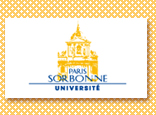| the main buildings are in OBLIQUE VIEW (seen
on the angle), which was favoured by Hogarth as being closer to life
than the frontal view with a central axis, a structure parodied in Gin
Lane. the receding oblique horizontals of the roofs and windows both
on right and left
converge on the SAME HORIZON.
The flagstones of the foreground also
converge on the same line, but not on the same point, which shows that they
are again placed obliquely in relation to the walls of the houses. Since
they are slightly curved, stiffness is avoided.
These flagstones are also oblique in relation to the ground line,
contrary to the usual orthogonal grid of paving stones in elementary
perspective diagrams. This is a way of leading the eye into the picture in
different directions, which gives a variety of movement loved by Hogarth.
the oblique perspective scheme is underlined by the COMPOSITIONAL
EFFECT of the pawnbrokers sign, which is collapsing: it is placed on a main
compositional oblique leading to the point where the horizon meets the
left-hand frame. The oblique is symmetrical with the main construction line
of the happy group below, suggesting a correlation between the prosperity
of the population and the decadence of usury. |
there are TWO HORIZON
LINES:
- the orthogonals of the more distant house to the left
L2 (eaves and roof ridge) converge on the
same horizon line H as the orthogonals of the
closest house to the right R1
- conversely the orthogonals of the closest house to the left
L1 (joints between the stones) converge on
the same horizon H as those of the more
distant house to the right R2 (window sills)
a further CRISS-CROSS PATTERN prevails FOR THE FIGURES: the line of
sight of the figures to the left (FL) is not at
the level of the horizon H of the closest
house L1 but on the horizon
H of L2, and
conversely the line of sight of figures FR is
at H, which is not the horizon of the house
above them R1.
These formal anomalies suggest the distorted world created by gin,
as well the authors satirical vision. |



